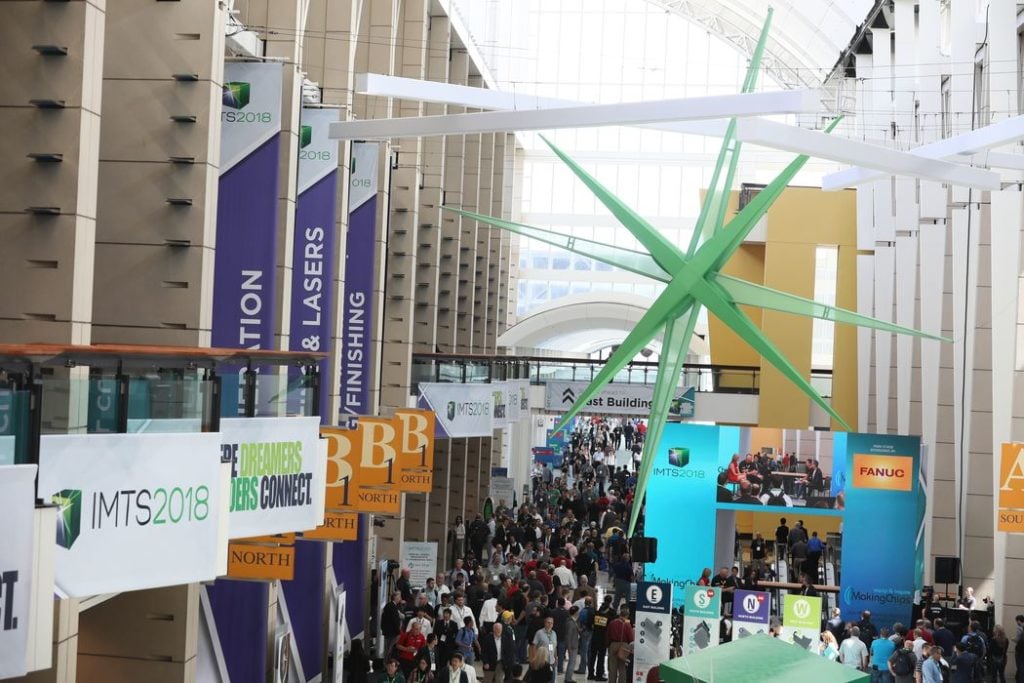
SPONSORED CONTENT
This is part two of a two-part discussion on four high-impact challenges the additive manufacturing industry is overcoming; see part one here.
Additive manufacturing (AM) is relatively young as both a technology and as an industry. It has seen great expansion in rapid prototyping, tooling, and low- and mid-volume production, as well as made some moves toward serial production. There remain, however, several hurdles to overcome for AM to achieve its full potential as a manufacturing technology.
AMT – The Association For Manufacturing Technology has recognized and promoted AM, and it continues to see a high potential for even further advancement. The organization has identified four high-impact challenge areas that need to be addressed from an industry standpoint to accelerate AM technology for industrial application:
- Immature material availability
- Unstable production processes
- Inefficient paths to industrial certification/acceptance
- Relatively expensive unit-production calculations
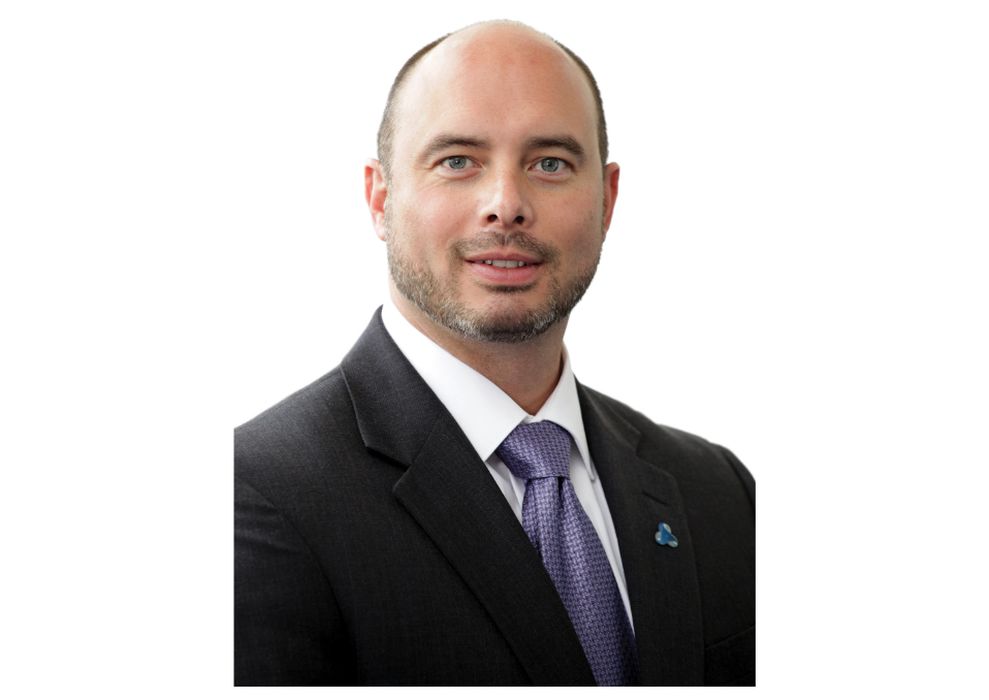
I spoke with AMT Vice President and CTO Tim Shinbara and Dave Burns, senior advisor to AMT and principal and founder of Global Business Advisory Services, for a look into these four areas of challenge. This is part two of our discussion. In this article, we address points three and four above.
Inefficient paths to industrial Certification/Acceptance
Even if AM overcomes material and process limitations (as discussed in Part 1), inefficient paths to industrial certification hinder industrial acceptance of AM. Fortunately, standards organizations are addressing this issue, including:
- The ASTM F42 Committee has produced standards that “define terminology, measure the performance of different production processes, ensure the quality of the end products, and specify procedures for the calibration of additive manufacturing machines.”
- ISO/TC 261 Additive Manufacturing technical committee states that, “We are the world-wide community to develop and support standards to promote the industrialization of this new technology.” ISO/TC 261 works in a unique partnership agreement with ASTM International and various liaisons with ISO/CEN committees and industry associations to strive for a vision of “One world – one Standard!”
- The American Welding Society, which produces standards governing welding processes, has established the D20 Committee on Additive Manufacturing and published D20.1/D20.1M:2019, Standard for Fabrication of Metal Components using Additive Manufacturing.
- TWI (Cambridge, UK) is one of the world’s foremost independent research and technology organizations and has also recognized the need for AM standards and certification.
These organizations and others are moving the industry forward, but the list of standards (in the mere dozens) and their adoption remains in its infancy. Fortunately, the manufacturing industry is familiar with creating and adopting technical standards. It is a problem that time and the efforts of committee volunteers will solve. The final barrier to adoption requires reversing four decades of corporate focus upon relatively short-term profits.
Relatively Expensive Unit-Production Calculations
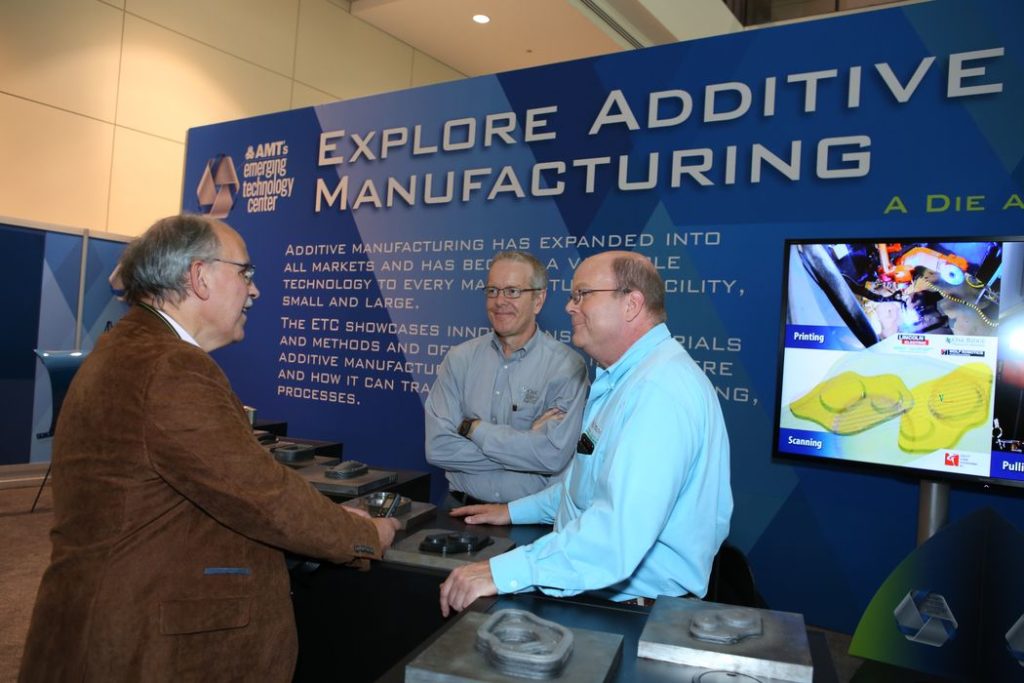
Manufacturers often use piece-part cost as the final determining factor for selecting one process over another — especially for higher unit volumes – and that’s exactly where AM may suffer in the marathon of technology selection.
To start, the capital investment remains much higher than subtractive processes, especially for large parts. A machining center with a 1 m3 work envelope might cost $350,000. To print a component that size requires a system that costs perhaps $1.5 million.
However, even smaller components present unit-cost hurdles to overcome. AM material and energy costs are higher and cycle times are long and costlier. Parts often need post-print hot isostatic pressing (HIP) treatment to ensure the material achieves optimum fatigue and creep properties. Many parts also need surface finishing, as well as advanced non-destructive testing.
“We’re getting better and driving costs down, but if we only use a unit cost comparison, we’ll currently struggle to justify the broad transition to AM,” said Burns.
AMT’s Shinbara notes the 1980s were an inflection point where MBAs and CFOs who became CEOs decided to build their supply chains around part cost. Offshoring production lowered piece-part costs which directly improved a company’s quarterly profits, share price, and retirement plans. Currently, we’re caught in a self-reinforcing cycle of short-term thinking.
Exposing Hidden Costs
For AM to win the technology selection marathon, “One technique is to change the basis of contract negotiations from lowest piece-price cost to optimized revenue assurance,” said Shinbara.
Due to supply chain disruptions in China and shipping delays in Los Angeles ports and elsewhere during 2020 and 2021, many companies simply do not have product to sell or can only obtain a fraction of the products desired.
“The high awareness of revenue stream disruptions makes it a good time to have conversations about the true total cost of production,” said Shinbara.
Burns agrees, noting AM providers need to show prospects the hidden costs of shipping, lead times, inventory, and other supply chain costs. He cites an example from early in his 3D printing career of a service parts company that provided centrifuge filters to the mining industry. The centrifuges could not be down for long, and the customer required a variety of filter shapes and sizes. As a result, the company needed 16 filter SKUs available at all times.
“When I looked at 3D printing the parts, a few things were immediately apparent,” said Burns. “3D printing could improve fluid flow by printing curvatures into the corners instead of using square corners. Incrementally, the main failure mode of the filters was in the welded joints, and 3D printing could significantly decrease that failure mode.”
When the 3D printed price was calculated at a unit cost of $60, the company owner balked, as he paid a Chinese manufacturer about $50 per filter, including shipping. He viewed the $10 price difference as profit margin erosion. Then Burns and the owner looked at supply chain costs. To start, lead time from China was nominally 12 weeks (including transport by sea), but often parts were late. To ensure filters were always available, the company kept a two- to four-week supply of each SKU on the shelf.
“When we totaled the value of all the parts in inventory, all the work in process, and the 12-week supply of each SKU on the water, we learned he had the equivalent of more than 30 percent of his annual revenue for the product line tied up in supply chain costs,” recalls Burns.
By embracing a local source for 3D printing, the company reduced lead time to a consistent 10 days and delivered a better performing design to its customers. The owner no longer had to speculate about future demand because lead times were so short, plus using a local source eliminated all the difficulties that existed with sea freight.
“Using the ‘more expensive’ solution freed up more than one million dollars of investment in work-in-process,” said Burns.
Shinbara adds that, “As we think about the optimal location for sourcing, AM technologies create a pretty compelling case for making things as close to the point of use as possible to optimize revenue assurance.”
The Biggest Picture
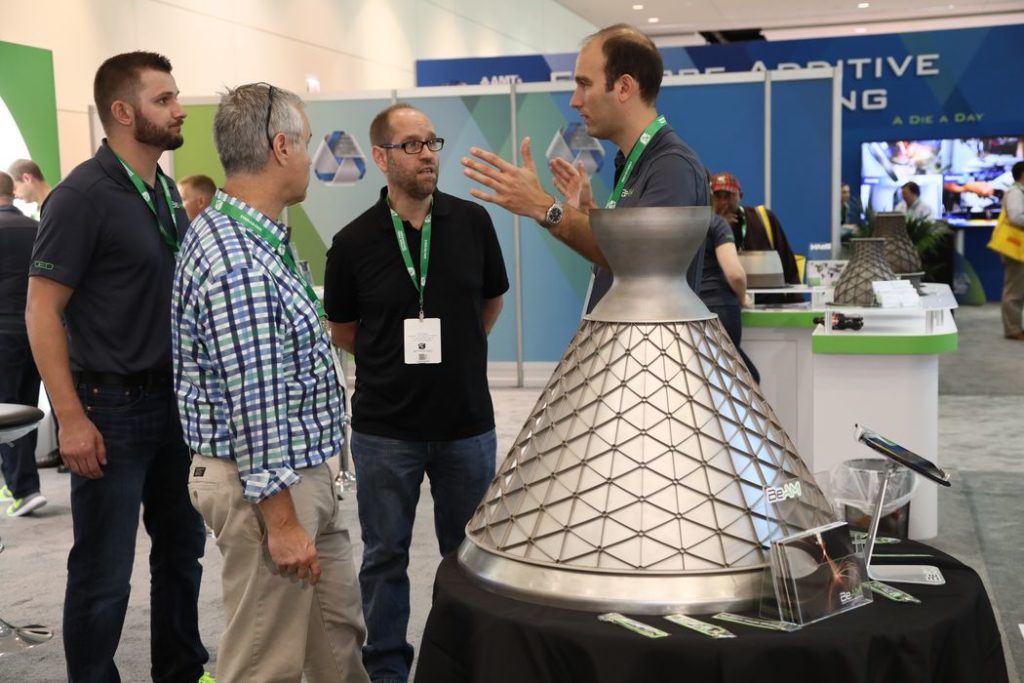
It will take a lot of courage in executive offices to shift sourcing decisions but Burns believes AM is part of a solution that can help OEMs achieve manufacturing productivities far beyond what they have achieved. To accomplish this goal requires taking two giant steps.
First, we need to embrace a comprehensive view of manufacturing that includes:
- Conceptualization, or the period of time from the moment that the idea for a manufactured part is spawned through its design life.
- Materialization, which covers the time from material selection to material formation to part completion.
- Utilization, including part use, performance, and disposal or recycle.
Next, executives need to embrace dynamic digital manufacturing technologies to transform their entire supply chain from their current siloed structure (separate but connected links between departments) into a digital thread (a continuum).
“Entire streams of integration create the power that will drive productivity higher and raise the standards of living for more people,” said Burns. “To that end, we need to change the narrative and re-establish our manufacturing infrastructure using a holistic approach. When we think of manufacturing as an entire system, rather than as a discrete event, we can see that we are much closer to wide-scale adoption of 3D printing than many people think that we are.”
AMT and AM
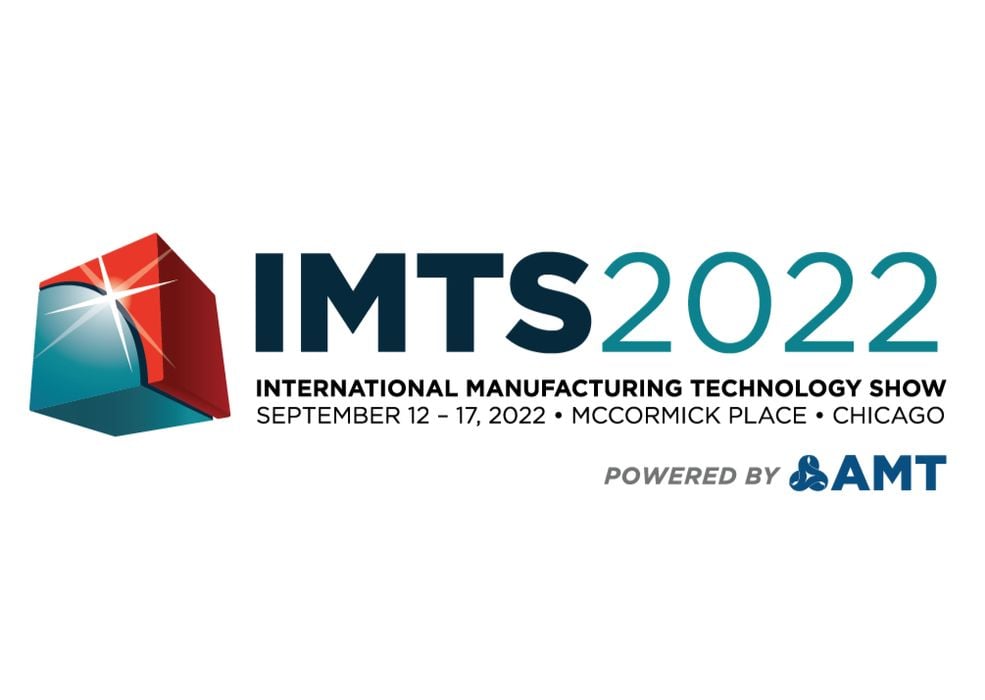
AMT – The Association For Manufacturing Technology is helping drive the industry conversation forward through such actions as facilitating committees to set standards, to set industry direction, and to discuss future ways that the organizations can communicate. This is also exemplified through AMT’s events.
On Thursday, September 9, at 10 a.m. ET, AMT hosts the webinar, Starting up a 3D Printing Company, world-renowned researchers Thomas Kurfess, Ph.D. and Lonnie J. Love, Ph.D., from the Oak Ridge National Laboratory. They interview entrepreneur Austin Schmidt, co-founder and president of Additive Engineering Solutions – the first company to commercialize Large Format Additive Manufacturing (LFAM) as a contract service. (This is the first in a series of webinars AMT is hosting with Krufess and Love.)
November 2-5, AMT hosts MFG2021 + MTForecast in Denver, Colorado. The event brings together the manufacturing technology industry to network and gain insight on economic, market, and technology trends. In, Technology Insights – How Additive Manufacturing Can Catapult Your Business, successful AM entrepreneurs discuss how to harvest value from software technology and prepare for the interconnected ecosystem digital provides. Visit www.MFGMeeting.com.
Another example is AMT’s Emerging Technology Center (ETC) at IMTS – The International Manufacturing Technology Show, North America’s largest manufacturing technology event, owned and produced by AMT.
The ETC has promoted significant AM advancements and notably collaborated with the Manufacturing Demonstration Facility (MDF) from Oak Ridge National Laboratory. Most recently, AMT and the MDF produced two on-demand series of educational, informative, and even entertaining video programs: “Project Moonshot” and “Tom & Lonnie Chats.” The programs focus on how they tackle some of today’s biggest manufacturing challenges, including:
- AM substitutions for castings for machine tool bases, tooling, and large metal parts
- New technology that can boost metal removal rates by 300 percent
- Three different hybrid AM/subtractive machining centers and hybrid CAD/CAM technology
- An Overview of Metal Additive Manufacturing (AM) Systems: Pros and Cons
- Supply chain responses to COVID-19 featuring AM technology
- Computed tomography-based metrology solutions
- Cybersecurity, and much more
AMT and MDF will again collaborate for the ETC at IMTS 2022, which runs from September 12-17, 2022 in Chicago., Ill. Details will be announced closer to the show and posted on IMTS.com.
